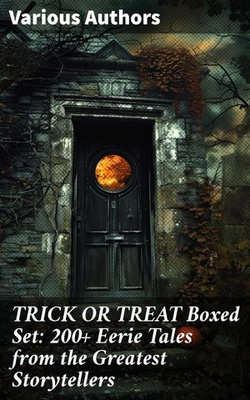Dive into the chilling world of 'TRICK OR TREAT Boxed Set: 200+ Eerie Tales from the Greatest Storytellers,' where the gothic and the ghoulish come alive over more than two centuries of storytelling. This anthology masterfully curates an extensive array of eerie narratives with themes ranging from supernatural encounters, psychological thrillers, to the profound depths of human fear and the macabre. The collection stands as a testament to the evolution of horror and suspense, offering an eclectic mix of short stories that include the spine-tingling intrigue synonymous with Bram Stoker, the unsettling atmospheres crafted by M. R. James, and the psychological complexities found within the works of Henry James and Ambrose Bierce, among many others. The anthology draws from a diverse pool of authors, each renowned within their own literary domain. Spanning from the forebears of Gothic literature such as Mary Shelley and Edgar Allan Poe, to the genre-defining voices of Wilkie Collins and Arthur Conan Doyle, this collection also features pioneers of American realism and transcendentalists like Nathaniel Hawthorne and Washington Irving. Collectively, these authors cast a wide net across various cultural backgrounds and literary movements, contributing significantly to the haunting ambiance that defines the horror and suspense genre. This boxed set provides readers a unique opportunity to explore the eerie and the unknown from a multiplicity of perspectives and stylistic approaches. Perfect for both the seasoned critic and the casual reader, it offers unparalleled educational value through its breadth of insights into the genre. Balancing literary merit with captivating narratives, 'TRICK OR TREAT Boxed Set: 200+ Eerie Tales from the Greatest Storytellers' encourages readers to engage with each story'Äôs psychological and societal themes, forging an enriching dialogue between the historical and the imaginative.



Share This eBook: